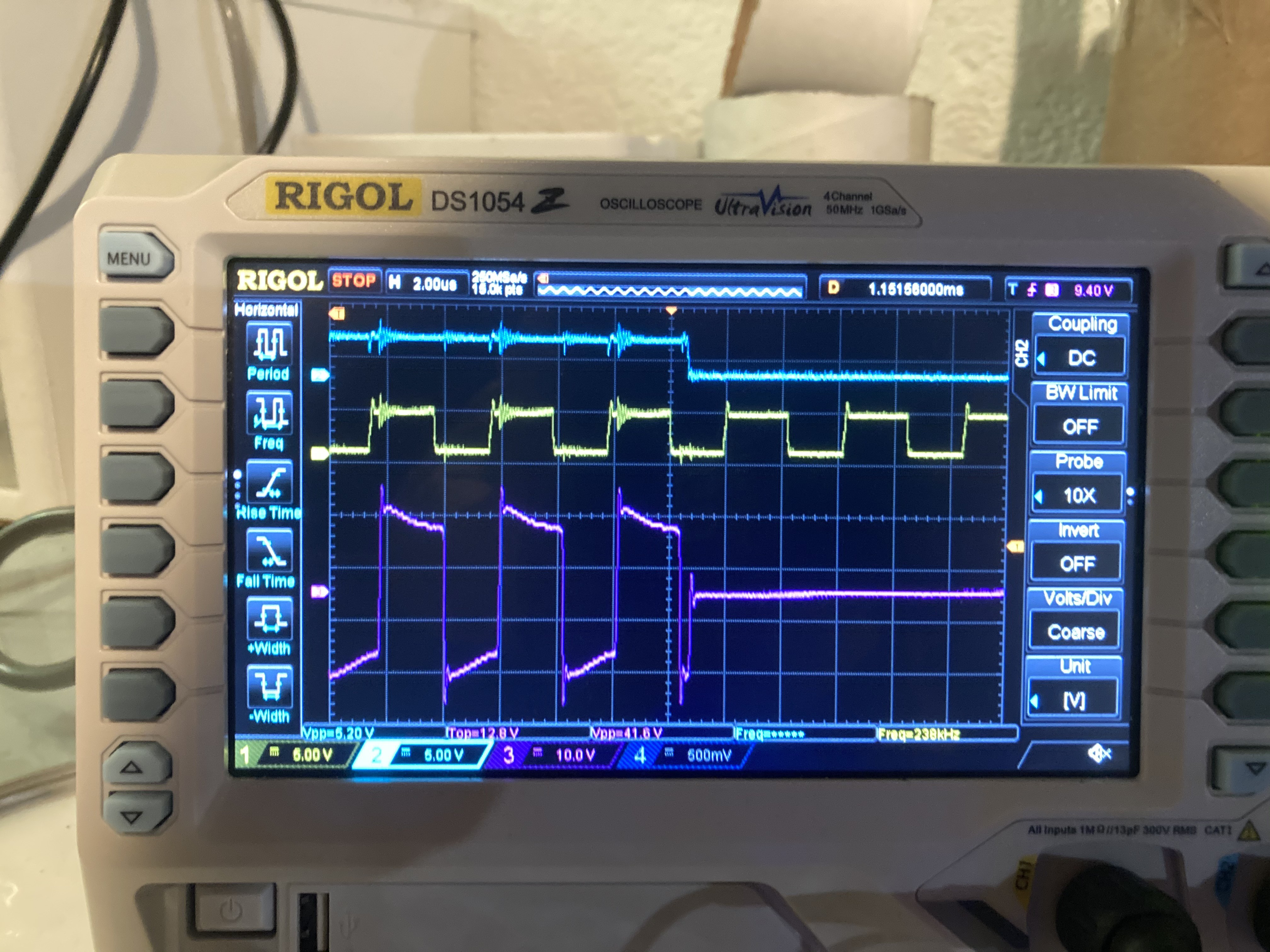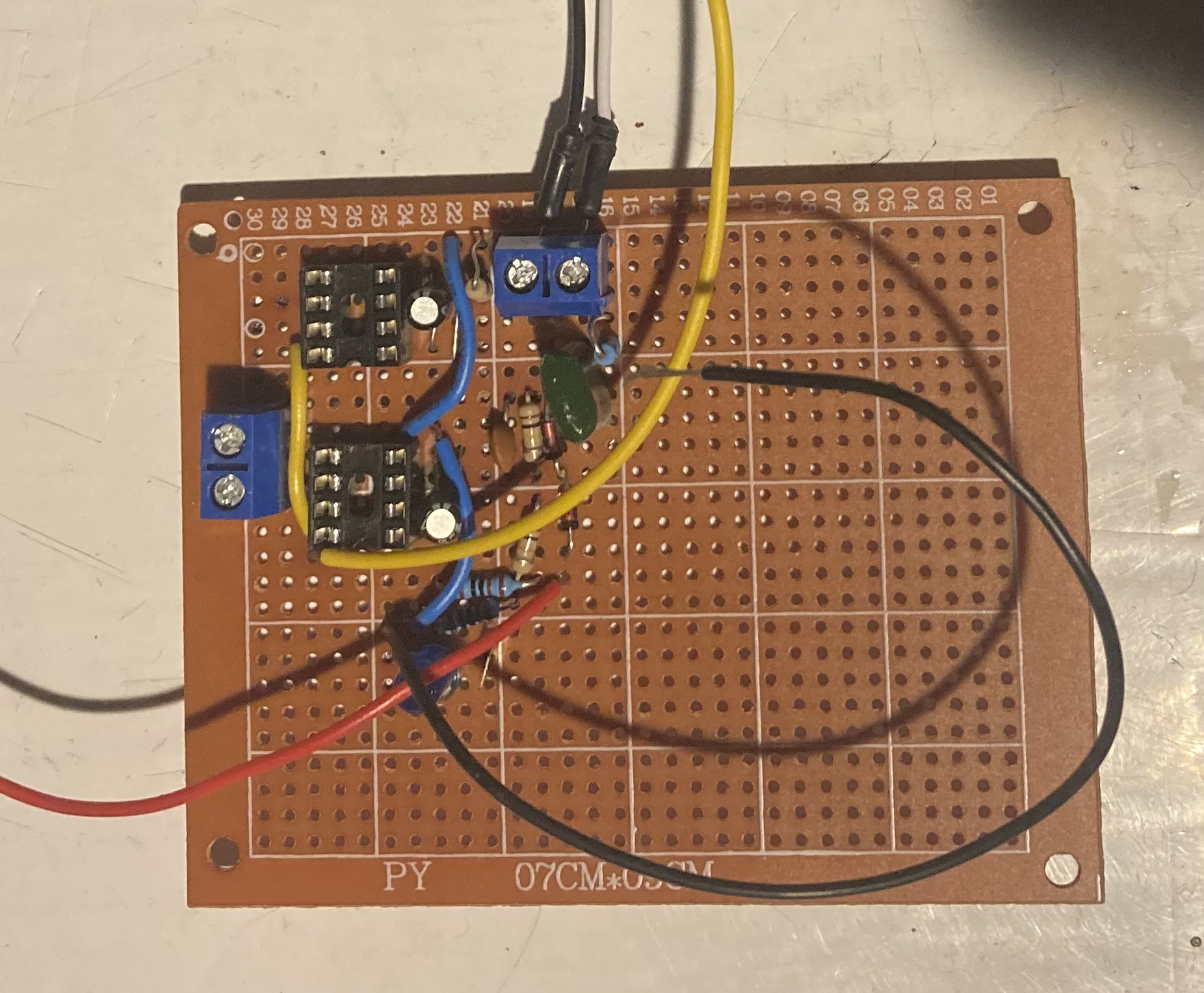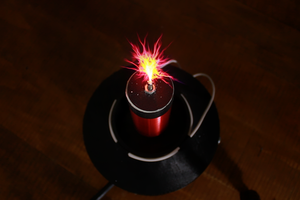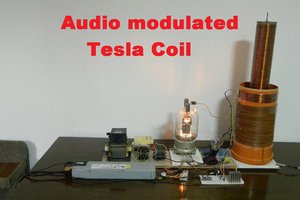Project Objectives: (originally from 8/29/19)
These objectives are mostly the same as my last project; however, my new goal when starting this project is really to get the best quality music and not necessarily high power and long arc length.
- Have improved performance over the last tesla coil (SSTC v1)
- Should produce decently sized arcs
- Should be able to run for at least 30 minutes at a time without overheating
- Should be able to play music at a decent quality (you can make out vocals and distinct instruments)
- The arcs should respond to the audio. Louder = longer arcs. No sound = no arcs. Many instruments/notes = many arcs.
- Should be entertaining for an average person
- The Tesla Coil should be portable (can carry reasonably with two arms) and easy to set up.
Inspiration and Resources used:
- Steve Wards sstc
- Loneoceans’ Laboratories SSTC v2
- Great Scott’s tesla coil project
- Power Max's musical SSTC
- EasyEDA
- JavaTC
How it works
A Tesla Coil in its most basic form is a transformer, an electrical component often used to "step-up" or "step-down" voltages inversely to current, often seen in devices like outlet power adapters.
A transformer consists of two windings of wire around a core--usually a metal that can be magnetized but sometimes air--and it functions on the principle that in a circuit, power = voltage * current. Voltage can be increased (stepped-up) if current decreases by the same factor and the power (aside from losses in the transformer) remains consistent. The ratio of the number of primary (input wire) windings compared to secondary (output wire) windings is directly proportional to the primary/secondary voltages. Thus, to increase voltage as high as possible we want many secondary windings compared to primary windings.
On a Tesla Coil, the "secondary" refers to the thin magnet wire wrapped hundreds or thousands of times around an inner cylinder and the "primary" is the thicker wire which is wrapped around anywhere from 3-10 times. This creates the setup we want to boost voltages.
A second principle that Tesla Coils rely on is called "resonance." Before understanding what resonance is, one requires a basic understanding of capacitance and inductance.
A capacitor is an electronics component that can store energy in the form of an electric field created by charges on two insulated plates. The ability for such a circuit component to hold electric charge is called capacitance and is defined by the equation q = CV, where q is charge, C is the capacitance (in Farads), and V is the voltage. Likewise, the energy stored in the electric field of a capacitor is:
Similarly, an inductor is a component that stores energy in a magnetic field. Any wire with current passing through it produces a magnetic field, but by winding a wire into a coil, this effect can be magnified to the point where a measurable voltage drop will form. This voltage is defined by the equation:
L refers to the inductance (in Henrys), and the dI/dt refers to the time rate of change of current. In other words, an inductor creates a voltage drop to oppose a change in current. As mentioned previously, the current passing through an inductor creates a magnetic field that stores energy, which is equivalent to:
When a capacitor and inductor and put together in a circuit, it creates very interesting properties.
The most common way to explain resonance in circuits is to make a mechanical analogy to a pendulum. Voltage in a circuit is analogous to the height of the pendulum while current can be visualized as its speed. When a pendulum is lifted and released it oscillates back and forth with energy transitioning between kinetic energy and potential. Resonance in a circuit operates in a similar fashion, with energy transitioning between electric and magnetic directly related to the voltage across a capacitor and the current flowing through an inductor. When a pendulum is at its peak the speed is zero, and when its speed is at a peak its height is at its...
Read more » Sebastian
Sebastian



 Zach Armstrong
Zach Armstrong

 Ellie T
Ellie T
 mircemk
mircemk